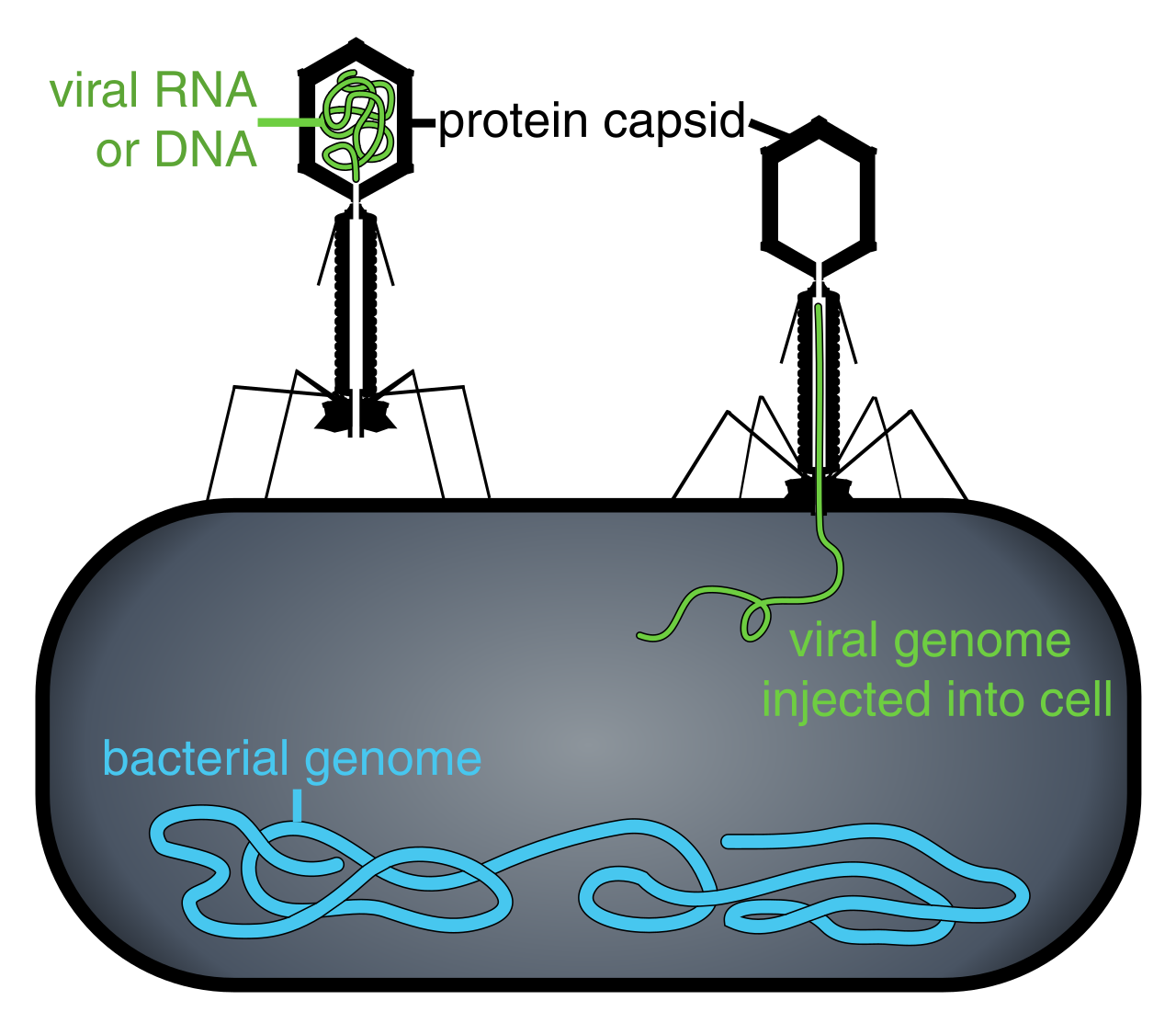It works pretty much the same way as it does in a single cell of a multicellular organism. For example the phage particle attaches to a bacterial cell and then injects the genome inside using its tail. The genome can either get integrated into the bacterial genome and replicate with bacteria. Or it can make virus proteins and copies of its genome. In the later case it will burst open the bacterial cell and released the assembled phage particles out in the open.

Image by Thomas Splettstoesser | CC BY-SA 3.0
That being said, bacteria also have tools to fight back and degrade the phage genome that enters the bacterial cells. I mean that is how we got the current CRISPR technology. Its always an evolutionary arms race there. Here is a post titled - Journey from adaptive immunity in bacteria(CRISPR) to saving Man's best friend(Dog). which I wrote sometime back regarding how CRISPR works. You may find it interesting.
Cominh to your second question on virus eaters. There aren't many examples of it. Its mostly like virus infects the cells and if virus fails the cells degrades its constituents and probably use it for something. Now there was some ideas floating around that some protists may eat viruses in labs, but there have not been any hard evidence for it. However recently, Brown et al., in 2020 claimed that some protists esp picozoans might eat viruses. They think their eating aparatus is too small to consume bacteria, but large enough to consume viruses of 150nm and use them as carbon source. I mean they do need more evidence. But for now I can do a more detailed journal club on why this is an interesting paper if it interests people.
Let me know if you have any further questions. 🙂
Hi there,
you are using an image and language here that refers to visible things from the animal world we know. We know "eating and being eaten", "proboscises and appendages that dive into something from the insect world".
But when we talk about atomic/sub-atomic processes, this language is inappropriate because we cannot see what these particles are doing.
We can only translate it into a language that serves the human imagination through the instruments that make something visible with the help of chemistry, rays and other substances.
In this respect, I consider such interpretations as have been captured here in the picture to be rather the expression of an artist or designer, but not of what is happening there on the atomic or molecular level.
This form of language is highly suggestive; our habit of understanding something through visual images is strongly served here.
Imaging or imaging processes that serve as mediators between the invisible and visible worlds are inventions that now go far into the interpretive realm because they do not allow what can be seen with the eye or with the microscope to be seen without further intervention. But this raises some concerns about accuracy.
The more you rely on a combination of manipulation of states through the use of these techniques, the more justified it is to ask whether it is not the manipulation itself that has influenced the very outcome of what is made visible. I rarely see this question asked.
The layman will think of an electron microscope as a better machine that reinforces the old image of "I am looking through a magnifying glass". However, it is impossible to depict a real-time image of such small particles in the form shown here. Therefore, it is and remains a linguistic interpretation.
Correctly one should say "it was made for me to see" instead of saying "I saw it".
I can partly understand the great fascination that such imaging techniques using physics and chemistry provide. They create the impression of extensive control over even those processes that are not accessible to our normal senses. They are meant to provide a sense of security precisely where we are no longer sure that what we are looking at is what we are (not) seeing. If that makes sense to you?
The samples that are examined for such imaging, have they in turn already been affected at a hierarchical level higher up by chemicals or aggregation state change processes? I assume so. So what is left of the original nasal or throat swab? Is the original still there?